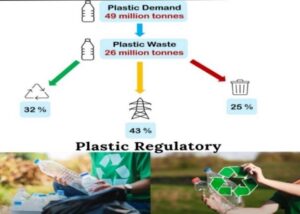
Importance of Recycling, HDPE: Saving the Planet One Bottle at a Time!
Did you know that the plastic bottles you use and discard every day can have a significant impact on the environment? High-density polyethylene (HDPE), one of the most commonly used plastics for packaging, can take up to 1,000 years to decompose in landfills. Fortunately, recycling HDPE not only reduces waste but also helps conserve valuable resources and protect our planet for future generations.
What is HDPE?
HDPE is a versatile plastic made from petroleum-based polymers. It is popular because of its durability, strength, and resistance to chemicals. HDPE is commonly used to manufacture bottles for milk, juice, water, and household cleaning products. Its versatility and widespread use make recycling HDPE a crucial step in reducing our environmental impact.
The Benefits of Recycling HDPE
- Reducing Energy Consumption
Producing new plastic from virgin materials requires significant energy inputs. Luckily, recycling HDPE saves up to 75% of the energy needed to produce new plastic. By recycling HDPE, we conserve energy resources and reduce our carbon footprint.
- Conserving Natural Resources
Petroleum, a non-renewable resource, is the main ingredient in HDPE production. Recycling HDPE reduces the demand for virgin plastic, preserving precious fossil fuels and mitigating the negative environmental impacts associated with extraction.
- Preventing Pollution
Improper disposal of plastic bottles can lead to pollution of waterways and harm wildlife. By recycling HDPE, we ensure that these bottles are properly managed, preventing them from polluting our oceans, rivers, and landfills.
- Encouraging a Circular Economy.
Recycling HDPE is an essential component of a circular economy, where materials are reused rather than discarded after a single use. By recycling HDPE, we contribute to a more sustainable and efficient system that minimizes waste generation.
How to Recycle HDPE
Recycling HDPE is relatively straightforward, and most communities offer HDPE recycling programs. Here are a few simple steps to follow:
- Check if your local recycling program accepts HDPE. HDPE bottles are usually labeled with the number “2” inside the recycling symbol.
- Empty and rinse the HDPE bottles to remove any residual liquids or contaminants.
- Remove any non-HDPE components like caps, labels, or pumps, as they may hinder the recycling process.
- Flatten HDPE bottles to save space during transportation.
- Place the HDPE bottles in your recycling bin or take them to a designated recycling center.
Remember, proper recycling practices are essential to ensure the effectiveness of the process. Follow your local recycling guidelines and always double-check for any specific instructions or requirements.
The Future of HDPE Recycling
While recycling HDPE is crucial, it’s also essential to explore alternative solutions, such as reducing plastic consumption, designing more eco-friendly packaging, and investing in innovative recycling technologies. As consumers, we can support these efforts by making informed choices, advocating for sustainable practices, and encouraging businesses to prioritize eco-friendly packaging materials.
Together We Can Make a Difference!
Recycling HDPE is a small but significant step towards a more sustainable future. By recognizing the environmental impact of plastic waste and taking action, we can contribute to conserving natural resources, reducing pollution, and shaping a healthier planet for ourselves and future generations. Start recycling HDPE today and be part of the solution.
Remember: every bottle recycled is a step closer to a cleaner, greener future!


